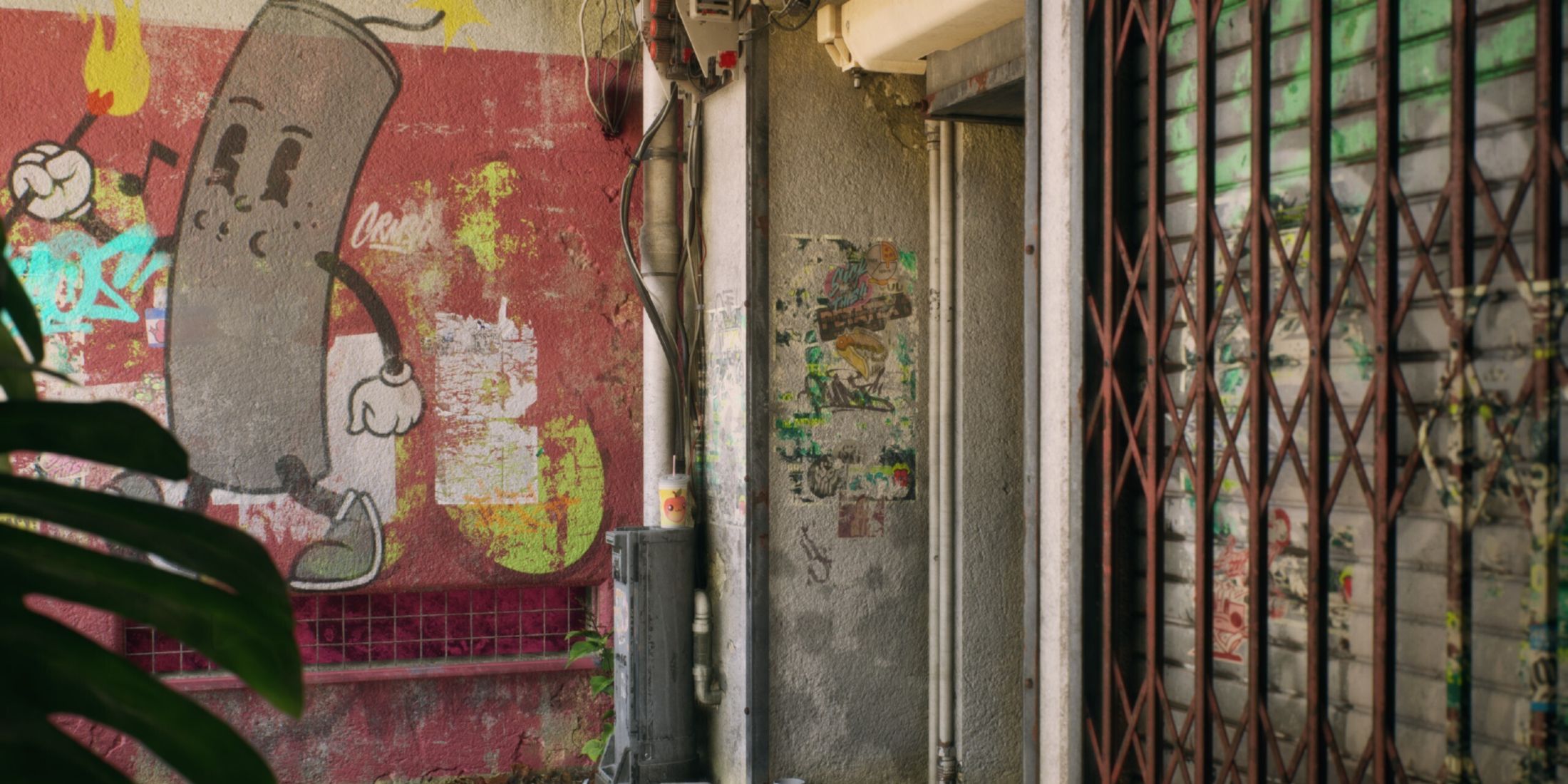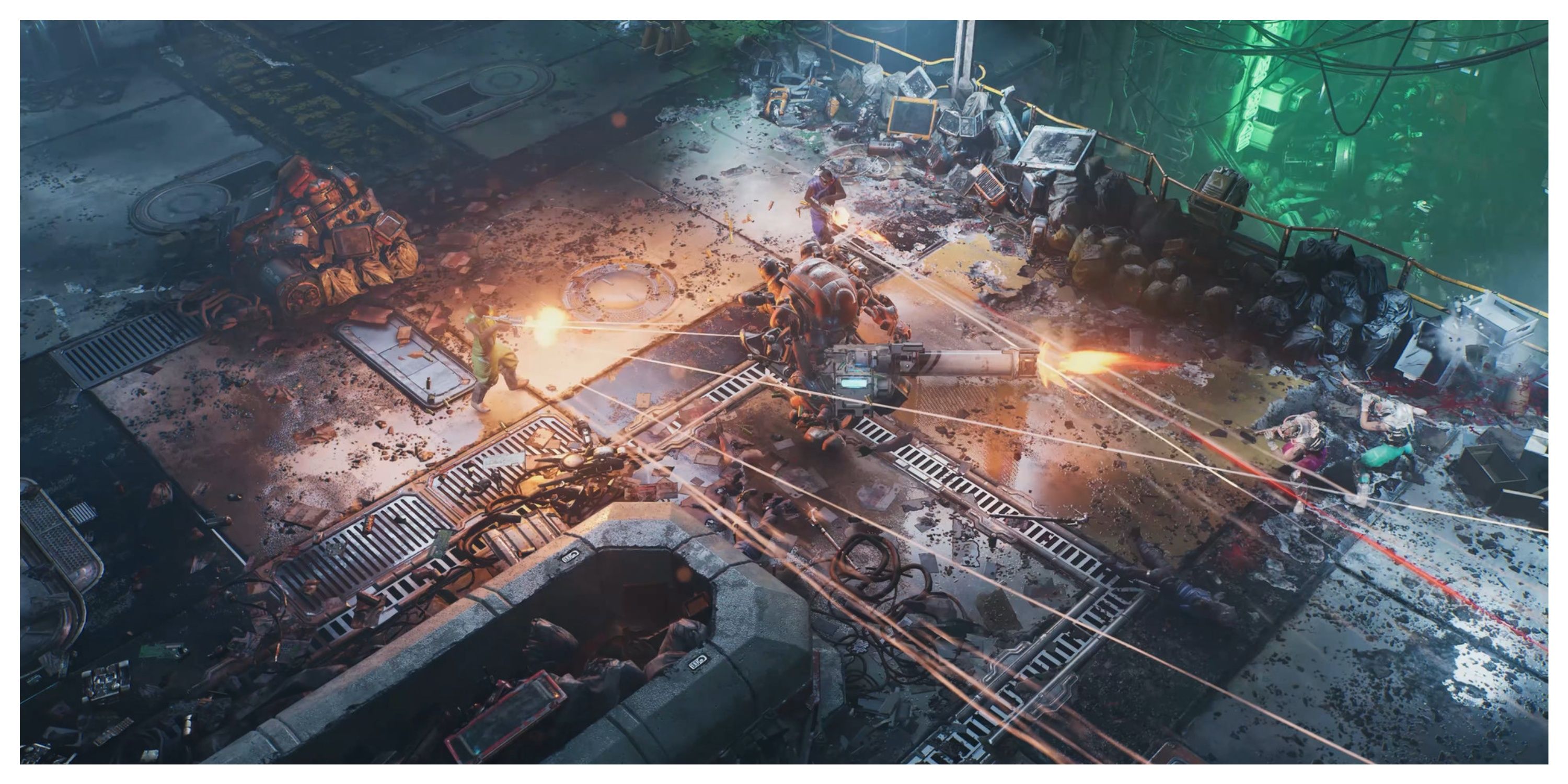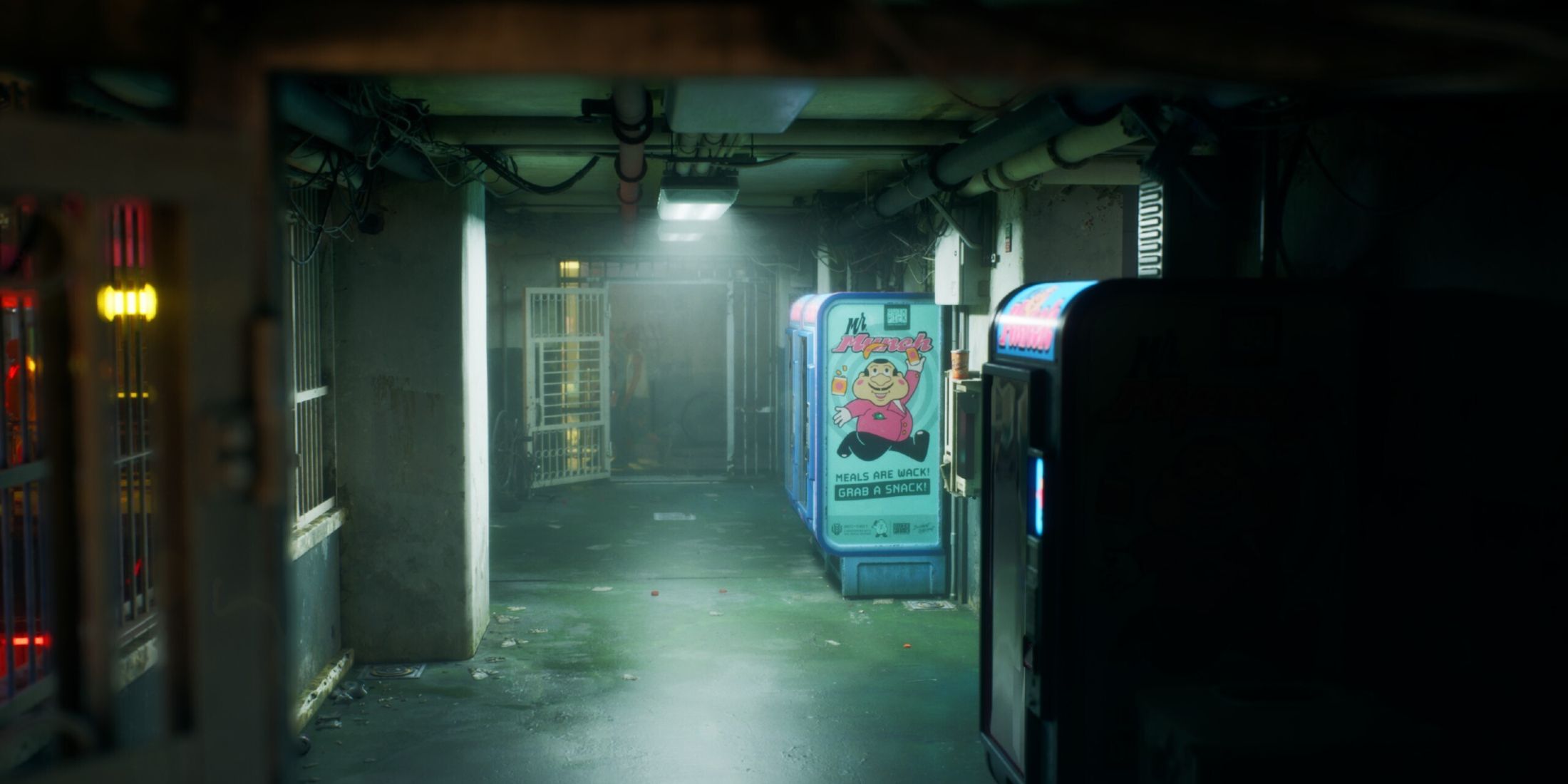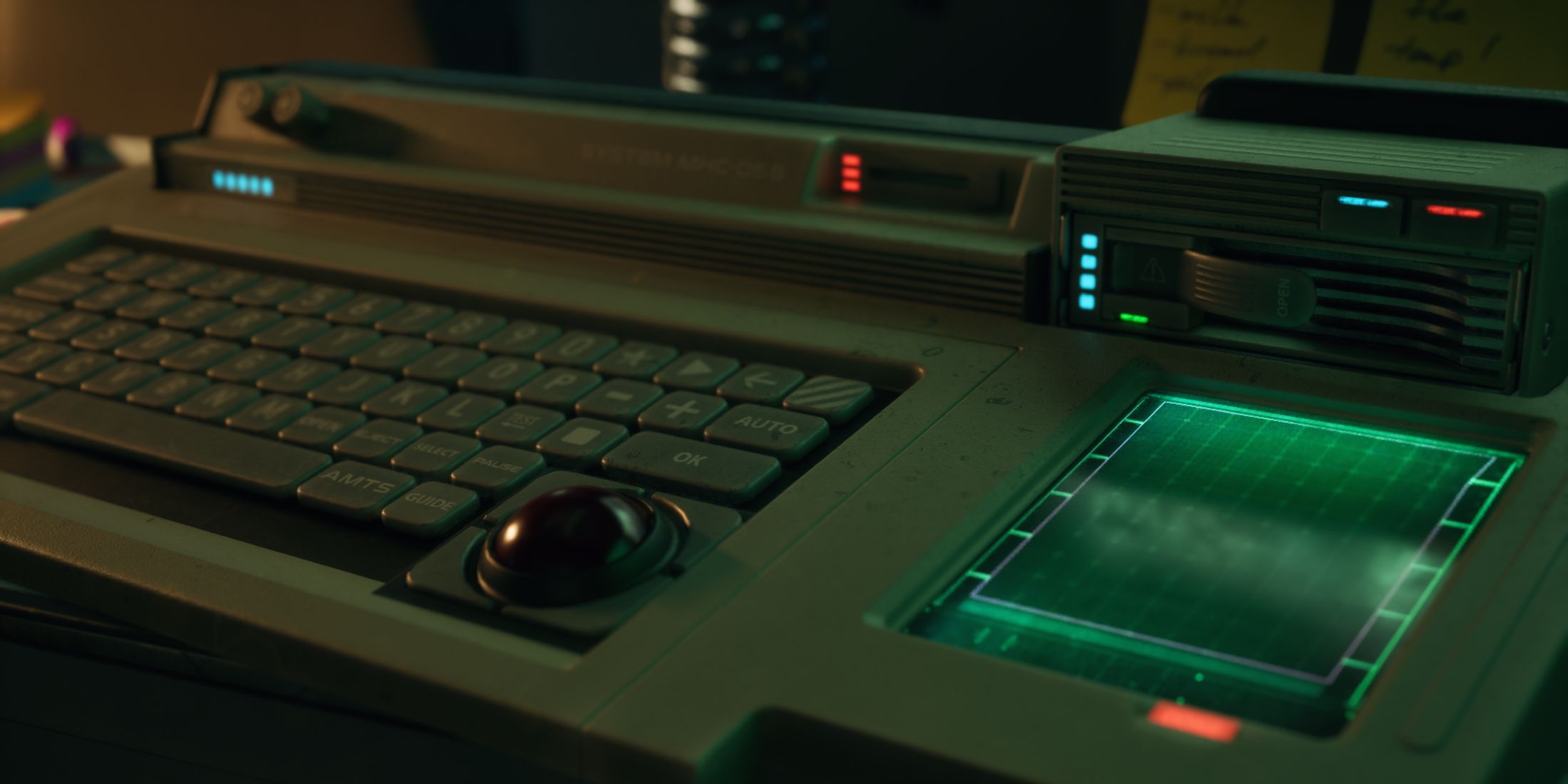
Recently, game development studio Neon Giant has been quite active. After releasing their first game, The Ascent in 2021, they were acquired by Krafton in 2022. Since then, the team, which includes several seasoned developers who have previously worked on games like Wolfenstein and Far Cry 3, has been hard at work on a new project under the working title Project Impact. The team is optimistic that their upcoming game will leave a lasting impact.
In a recent conversation with Arcade Berg and Tor Frick, Creative Directors at Neon Giant, we delved into their studio’s history so far. They shared insights on Krafton’s acquisition of their Swedish team and how this collaboration has not hindered their creative freedom in any way. Additionally, they provided some intriguing details about their upcoming project, Project Impact. For the sake of clarity and conciseness, our conversation has been edited and condensed.
Neon Giant’s Journey So Far

Q: Can you talk about Neon Giant’s journey so far?
Berg: In a nutshell, we created the game The Ascent, and it was an enormous hit for us. This was our first opportunity to catch our breath since 2018 when we established the studio. Many of us have backgrounds in AAA studios, where we’ve worked on games we take pride in having contributed to. However, we no longer fully agreed with the ways games were being developed. After some time, we arrived at a juncture where we decided, “Let’s put all our chips on ourselves and solve this together.
Undeniably, creating “The Ascent” was a challenging endeavor. However, the knowledge and insights we garnered during this journey were invaluable. It served as evidence that our approach to game development is effective.
During the project, our focus was solely on the present moment, with no time for contemplating the future. Our entire attention was on ‘The Ascent’, Neon Giant’s culture development and studio construction. With the achievement of that success, we were finally able to take a break and discuss among ourselves and with others, questions like: “Now that we have the freedom to decide, what do we wish to do next? Should we remain small-scale or aim for something larger?
Previously, we discovered Krafton, a company that aligns with our game creation philosophy. We aim to continue developing games in the same spirit, yet seek an extra boost – akin to rocket fuel – to be more daring and agile. Simultaneously, we crave stability in our business operations. Our search led us to a strategic partnership; however, our primary goal has always been, and remains, creating games. We are not a studio driven by corporate aspirations, but rather a team that is transparent about our values and working methods. Prior to joining Krafton, we contemplated: if we were to collaborate with another entity, it should be one that resonates with our approach to game development and shares our enthusiasm for the creative process.
Berg: We prefer to show our authentic selves and aspire to grow in the direction we choose. Therefore, it was crucial for us to pause, reflect, and ponder, “What is our desired goal?” Our journey began with a vision of creating games in a personalized manner, and each team member shares this passion. For us, it was essential to find a collaborator who would be just as enthusiastic about that pursuit. Fortunately, we found such a partner in Krafton.
One time, we accompanied Neon Giant to a market gathering, which presented us with numerous potential partners. It was an enlightening experience for us, not something that happens every day. What made it even better was the abundance of possibilities for collaboration, should we have chosen to pursue them. However, many were quickly dismissed as they had pre-existing solutions and expected us to adapt, a scenario we were unwilling to entertain. Instead, we are offering our package, and we are Neon Giant. Our interactions with Krafton, from the very first meeting, have always been encouraging. To this day, they continue to be so.
Our primary focus revolves around ensuring the excellence of the gaming experience. Ultimately, our goal is to design exceptional games that players will enjoy, while also allowing each team member’s unique skills to shine. In our initial discussions with Krafton, they expressed their confidence in our vision. We found common ground on various aspects, particularly our approach to work and objectives.
Frick: Another valuable aspect for us was preserving Neon Giant as its unique identity. Fortunately, they agreed without hesitation, rather than insisting on replacing the Neon Giant logo with a Krafton one. Instead, they’ve been supportive of maintaining our distinct brand and we continue to work exclusively with our own team members under our original banner.

Q: How big is the Neon Giant team now? How many staff members do you have?
John: Currently, our team size has doubled, giving us around twice as many members. This means we have duplicates of each role, serving as backups if someone falls ill, which significantly improves our operations. Initially, there was a lot of grueling work involved, especially since we only had one animator at the start. This single individual created quite a bit of stress. While we all appreciate the pressure it brings, it’s not always smart for business to operate without contingencies. As a highly ambitious team, we aim for flexibility in our projects, and that requires having the right personnel on board.
Berg: In our search for the perfect partner, we recognized our good fortune in being able to decline offers and walk away when needed, which is ideal in such discussions, isn’t it? Thus, we’ve always been straightforward about our identity, work style, and goals. There were no hidden agendas. This approach seemed to align with Krafton’s perspective on this project. Consequently, our journey together has been free of unpleasant surprises. So far, things have gone smoothly, making it a highly positive experience for us.
Frick: In addition to our main tasks, we also consider who’s on our team, what skills we possess, and what projects we’re eager to create. We want to make something that truly ignites our team’s passion. With Krafton’s support, every project—whether it’s the current game or the one coming up next—will carry the unique Neon Giant stamp. It might be hard to define what makes a Neon Giant game, but I hope it’s something that fans and players will easily recognize as such. This distinctive quality is a reflection of our team members doing their jobs freely, which shapes our personality and culture.
Berg: One problem we frequently encountered throughout our careers is the underutilization of talent and too many people involved, which can be counterproductive. We’re addressing this issue, making it all the more thrilling. This is also a key factor in attracting senior professionals. They’ve been in the gaming industry for decades, and they yearn for challenges like this. They know how to make strategic decisions and work effectively within their craft. Krafton appreciates our independence, similar to ours, as we don’t have regular employees on-site at our office. Instead, Neon Giant exists comfortably in its own Neon Giant sphere. This setup suits us perfectly.
Neon Giant Talks Project Impact

Could you provide some information about the game you’re currently developing, which goes by the codename “Project Impact”?
Berg: This game carries a significant portion of the genetic makeup from our earlier release, “The Ascent,” as well as our studio’s inherent traits. What excites us the most is creating immersive worlds, and this world is no exception. In the development of “The Ascent,” and more so with this new game, we strive to make titles where the world itself plays a leading role, not just existing for the player’s benefit. We have invested even more in this approach, not only in the game but also in the world we are constructing and the talent we have recruited.
The primary goal is to craft an immersive, engaging environment that invites players to delve deep. Unlike our previous work in The Ascent, we aim to take interactivity to new heights, making the world feel more responsive and dynamic for the player’s enjoyment. As tech enthusiasts, we relish the opportunity to utilize cutting-edge tools and trends, constantly striving to set new standards in this area – it’s a point of pride for us.
We take great pleasure in hearing comments such as, “It’s amazing how much can be accomplished with so few!”. Our passion lies in developing engaging video games. We appreciate when you choose to invest in our creations. However, we believe the experience should also be enjoyable throughout. This, we feel, is a key factor in eliciting the best from our team and achieving that extra mile.
Frick: Our approach involves seeking opportunities to perform exceptionally and put maximum effort. As a studio, we aim for openness in our communication. We may not be active on Reddit or other social media platforms frequently, but when we speak, we strive to be truthful and authentic. In our interactions with you now, you’re communicating with us directly, not through an intermediary. Unlike some organizations, we don’t have multiple layers of representation. If you were discussing a particular aspect of the game, you would be speaking with the person responsible for that area directly. This ensures that we are always well-informed and knowledgeable about our discussions.
It’s crucial to convey that our team, not a large corporation, is behind this game, focusing on quality above all. When we developed ‘The Ascent’, we aimed high, striving for it to serve as a benchmark in its genre and be visually stunning. Now, with Unreal Engine 5, our skilled team, and the game we’re creating, we’re pushing the boundaries of quality even more than before.
Berg: For interactivity, our preference is games that offer a lot of control to the player, this is crucial for us. We don’t aim to create a beautiful exterior with no substance. Instead, we strive for a world that feels responsive and engaging, as immersive and reactive as possible.
Q: What genre would you categorize Project Impact as?
Dev Team: This new project shares a similar Cyberpunk atmosphere as seen in The Ascent. Confidently returning to our comfort zone, given our extensive background in first-person gaming, we aim for this game to serve as an industry benchmark. It’s our goal that whenever someone else endeavors to create a game like this, they will undoubtedly mention it. We’ve noticed numerous games emerging with elements reminiscent of The Ascent, which only adds to our pride. We’re essentially revisiting the roots of our careers.
Berg: Our team specializes in creating AAA first-person shooter games. This genre is our strong suit and has always been our main focus. Working with a slightly larger yet still compact group, we’re excited to explore new ideas and push technological boundaries as we delve deeper into the first-person gaming world. I believe players will be astounded by the gameplay experience when it’s released, especially as we reveal more details about it. This project is a significant leap forward for our studio. The Ascent, while challenging, was a significant undertaking; however, this new project surpasses it in terms of ambition. We’re confident that people will be pleasantly surprised once they learn more about it.

A: Given its setting and first-person perspective, will there likely be comparisons drawn to Cyberpunk 2077, or does your game appear to be uniquely distinct in its own right?
Frick: To be honest, The Ascent is often compared to Cyberpunk 2077. However, it’s important to understand that these two games are quite distinct. While comparisons may be inevitable, we’re not basing our game on it. Instead, we draw inspiration from various forms of media beyond games. Our aim is to create something unique without getting stuck in the same patterns as other games. We have a wealth of experience in game development, and there are indeed fantastic games out there. But we’re more interested in offering something fresh, not just replicating what already exists.
To ensure authenticity, we aim to keep the essence of this project intact while exploring similarities with other works in terms of setting, storyline, and atmosphere. Since our team is compact, we have the advantage of being nimble, taking bold creative risks, and responding swiftly – an asset we plan to leverage by creating something slightly unconventional. One benefit of a small team is the ability to address issues promptly, and since fewer minds are involved in discussions, we can produce intricate work with ease. We intend to capitalize on this flexibility to create something unique.
Berg: It’s my wish that this game brings joy to as many individuals as possible, ideally reaching around 9 billion players. That would be fantastic! Yet, I’d prefer it if some adore it while others vehemently dislike it, rather than it being indifferent to everyone. Our goal is to create something that resonates with a wide audience, but I’d rather it evoke strong reactions, even if not everyone appreciates it. I’d much rather spark emotions than leave people feeling apathetic.
Q: When can we expect to hear more details about Project Impact?
Frick: We’ll reveal it as soon as we’re permitted. Working as a small team means we can only focus on one task at a time. We don’t have the resources to work on multiple projects simultaneously, like having 50 people dedicated to creating a demo or having 100 people working on specific materials in different places. Whatever we do is always in line with our current production stage. If we ever create a trailer, it will be produced at the same stage of development as when it’s made.
Question: Was The Ascent very focused on action? In what way does Project Impact stack up in terms of action intensity?
Essentially, player autonomy plays a significant role in this game. From our perspective, there isn’t a single right or wrong way to enjoy the game. It offers a great deal of flexibility and open-endedness.
Q: Any other details about Project Impact that you can share?
Berg: Working on The Ascent was fantastic, and it’s the kind of project every developer dreams about. It allows us to showcase our creativity while keeping it enjoyable for our team, yet maintaining the Cyberpunk genre. However, it has a more realistic touch compared to traditional Cyberpunk themes, as it incorporates elements like wood and plants, making it less focused on aliens and spaceships.
[END]
Read More
- Top 8 UFC 5 Perks Every Fighter Should Use
- Unlock the Magic: New Arcane Blind Box Collection from POP MART and Riot Games!
- Unaware Atelier Master: New Trailer Reveals April 2025 Fantasy Adventure!
- How to Reach 80,000M in Dead Rails
- Unlock Roslit Bay’s Bestiary: Fisch Fishing Guide
- Unlock the Best Ending in Lost Records: Bloom & Rage by Calming Autumn’s Breakdown!
- How to Unlock the Mines in Cookie Run: Kingdom
- REPO: How To Fix Client Timeout
- Toei Animation’s Controversial Change to Sanji’s Fight in One Piece Episode 1124
- Unleash Hell: Top10 Most Demanding Bosses in The First Berserker: Khazan
2025-04-18 13:31